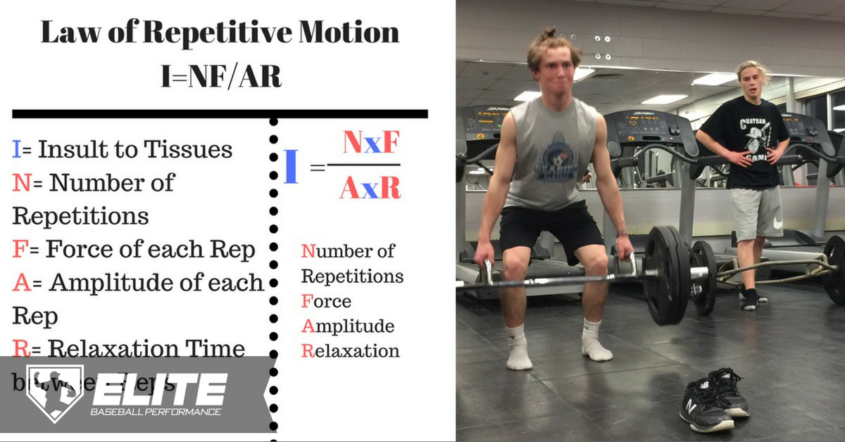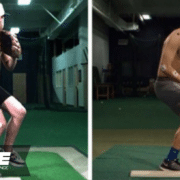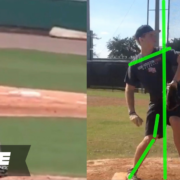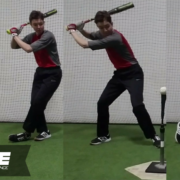4 Considerations for In-Season Baseball Strength Training
When life becomes busy and your free time starts to dwindle as you work to balance school and your social life with travel, games, and practice, it’s easy for other parts of your routine to get left behind.
One of the most common of those parts to be neglected is strength training. Even though, due to schedule demands, training at the same frequency isn’t possible, it’s still important to maintain some type of strength training routine during the baseball season.
In-season strength training is important for staying healthy and maximizing performance. Other benefits will vary from player to player, but include maintaining strength, mitigating stress placed on tissues during the season, and working to continue their athletic development.
With that said, you can’t treat your in-season strength training program like your off-season workouts.
Guys’ bodies are encountering different volumes of different physiological and biomechanical demands. Because of those demands, you need to appreciate these four considerations in order to set yourself (or your players) up for continued success throughout the season.
Areas of the Body That Encounter the Most Eccentric Stress
Eccentric stress is defined as high amounts of mechanical stress placed on a muscle while it’s lengthening.
High amounts of eccentric stress lead to increased muscle damage, muscle soreness, and potentially a loss of range of motion at the joint(s) where that specific muscle acts upon.
As a player’s throwing volume increases during the season, you need to consider the amount of eccentric stress placed on:
- The posterior shoulder
- The elbow flexors
- The hip external rotators
To gain a better appreciation for this accumulation of stress, look at the equation for the law of repetitive stress below:
If you can effectively manage the “I” in the graphic above, you’ll do a good job at mitigating injury. The body doesn’t separate stress occurred while throwing vs. stress occurred while lifting.
Insult to specific tissues is insult to those specific tissues, regardless of where it occurs. When a player’s shoulder is experiencing high amounts of stress during the season, the gym needs to be a place where you learn to remove insult to that area, instead of giving it more.
This can be done in a variety of ways.
Smarter exercise selection, e.g. push-up variations instead of dumbbell pressing, single-arm lat pulldowns instead of pull-ups, split squats instead of rear foot elevated split squats.
Managing volume (sets x reps) in the gym, e.g. only having 12-15 sets in a training session instead of 24-30.
Increasing mobility and learning to move better. However, understand that during the season you’ll be chasing your tail trying to continually improve range of motion. Do your best to allow tissues to optimally recover, while still getting a training effect.
Better postural awareness outside of the gym along with soft tissue work.
Educating athletes about adequate recovery between throwing, games, and training.
Prevent Delayed Onset Muscle Soreness
Like what was mentioned above, you don’t want to add more insult to tissues in the gym that are already taking a beating on the field each week.
You also want to make sure players can still train while feeling fresh for their games. In order to do this, you want to ensure your workouts are providing a training effect without causing too much soreness.
Here are a few simple strategies.
- Shorten the training sessions. Train for 45 minutes instead of 90.
- Decrease the total number of sets performed during the session.
- Minimize exercises with high amounts of eccentric stress. Sled pushes and step-ups may be better options than RDLs and walking lunges.
- Gradually increase volume throughout the program. Start the first week with the lowest volume. Give players’ bodies time to adapt to the exercises. Then slowly increase sets or reps as the month progresses.
Modify Your Direct Rotator Cuff Training
The rotator cuff training you were doing during the off-season should be adjusted while you’re in-season. The increased frequency and volume of throwing means players’ rotator cuffs will be more fatigued in the gym.
This state of fatigue isn’t ideal for performing high volumes of band external rotations and other rotator cuff work every day. Keep it simple, and perform some type of external rotation exercise and rhythmic stabilizations only a couple days a week.
Still Lift Weights
All that considered, players still need to lift weights during the season. You still want to get a training effect and make workouts challenging; you just need to put more consideration into what’s going on outside of the weight room.
While players are training with you 4-6 days a week during the off-season, you’ll have more control over their exercise and activity. But when the season rolls around, that may be limited to 1-2 days a week.
Be sure to take the demands of the season into consideration and get creative with your programming to allow yourself or your players to continue to strength train and remain challenged in the gym.
In Summary
A crucial component of staying healthy and improving as an athlete is balancing work and recovery.
An in-season strength training program can easily shift the pendulum in either direction. A poorly planned program can increase the stress placed on the shoulder, elbow, and/or hip and hinder one’s on-field performance.
A smart, well-thought-out program will allow players to maintain strength, allow tissues to receive adequate rest, and prevent injury by keeping mobility in check.
Mike Sirani
Latest posts by Mike Sirani (see all)
- 4 Considerations for In-Season Baseball Strength Training - March 20, 2018
- 7 Steps to Have a Long Baseball Career - April 11, 2017













Leave a Reply
Want to join the discussion?Feel free to contribute!